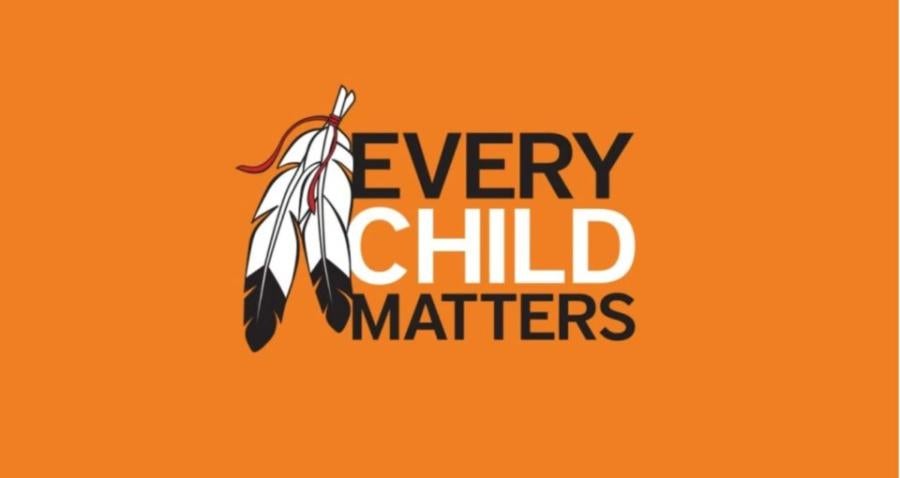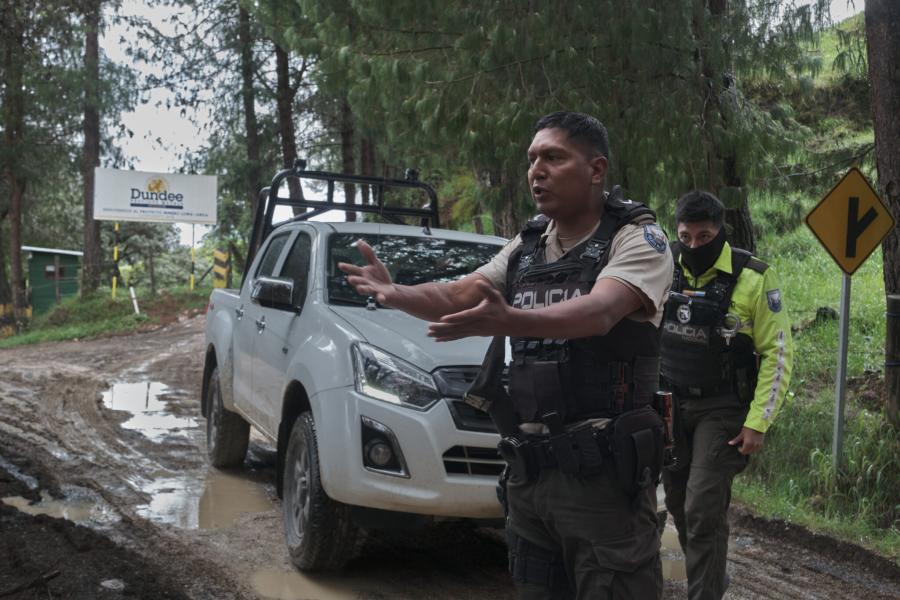"Our native language embodies a value system about how we ought to live and relate to each other... It gives a name to relations among kin, to roles and responsibilities among family members, to ties with the broader clan group.... There are no English words for these relationships.... Now, if you destroy our languages you not only break down these relationships, but you also destroy other aspects of our Indian way of life and culture, especially those that describe man's connection with nature, the Great Spirit, and the order of things. Without our languages, we will cease to exist as a separate people."
The state of a language can tell you much about its culture and people. Equally, the struggle to save a language forms an important part of the struggle for cultural survival. In the past 20 years, Canada's First Nations have become increasingly aware of this connection. Fifty of the fifty-three Aboriginal languages spoken in Canada are considered declining or endangered, and at least a dozen are on the brink of extinction. Yet the tide may be turning as more and more Aboriginal communities and organizations adopt language policies and programs. Their demands for recognition may soon occupy the national stage in a country with a painfully developed sensitivity toward linguistic rights.
Progress has been greatest in the North. Eurocanadian dominance over this vast, sparsely populated area has never been as complete as in the South: few Canadians ever venture "north of 60." In addition, Canada's decentralized federalism means that the Northwest and Yukon territories have a large degree of autonomy. As a result, a quiet revolution in the lives of Northern peoples can pass almost without comment in the rest of the country.
A SEARCH FOR MEANING
The Inuit, the indigenous people of the Canadian Arctic, have seen their way of life change considerably since the arrival of Europeans, yet their language and sense of identity remain strong. Nearly all Inuit children speak Inuktitut as their first language, and monolingual Inuktitut speakers are still common in many communities.
"You have to use English for paper-work," says Allan Angmarklik, a consultant with the Baffin Divisional Board of Education. "But Inuktitut is the most important language of everyday life. It's also come a long way in the schools. When I went to school about 20 years ago, the only thing we got taught in Inuktitut was the Lord's Prayer. Now most children are taught in it until Grade 2 or 3."
This is just the first step, he adds. "Since the board was created in 1985, we've been working towards a completely bilingual education system. I feel that our initiatives in book publishing and curriculum development may have ensured the survival of the language."
John Bennett, an editor with the national political organization Inuit Tapirisat, cautions against too much optimism. "There are two main problems that many Inuit school still run into," he says. "One is a lack of trained teachers who are fluent in Inuktitut. The other is the Southern curriculum. It will take some time before we have a curriculum based on Northern experience and the Inuit way of thinking."
However, important changes are underway. Under the terms of the largest land-claims deal in history, the Inuit of the Eastern and Central Arctic will have a territory of their own before the year 2000: Nunavut ("Our Land"). "It's possible that Inuktitut will become the main official language for the whole territory," says Angmarklik. "We'll still have English and French as well, of course, but in secondary roles." Inuit culture, too, he hopes, may gain the breathing space to develop and flourish on its own terms.
Yet what of the North outside Nunavut? Not only do 2,500 Inuit live along the coast of the Beaufort Sea and the the Mackenzie Delta, west of Nunavut, but the southwestern flank of the Northwest Territories (NWT) is home to a number of Indian peoples from the Athapaskan, or Dene (pronounced dehneh), language family. These people, who are actually outnumbered by Eurocanadians in the area, face a situation much closer to that of Aboriginal peoples in the rest of Canada: a mosaic of tribes and cultures that must somehow speak with one voice to win recognition.
For a decade, they have succeeded in doing just that. An Aboriginal majority in the Legislative Assembly of the NWT has done much to strengthen the cultural diversity of the region, including passage of the 1984 Official Languages Act giving official status to five Dene languages, along with Inuktitut, English, and French. The act means that government services are provided in all eight languages. Moreover, the government is officially committed to "preserve, develop, and enhance the usage of Aboriginal languages."
The effects have been significant, says Ethel Blondin, the Member of Parliament (MP) for the Western Arctic. "Eighteen of the twenty-four members of the Legislative Assembly are Aboriginal, and quite a few choose to speak their own language. You can serve on a jury in your own language. There are programs to develop legal and medical terminology and train translators and professionals in those areas. More noticeably, there's been a spinoff effect on the service industry. Packaging, menus, signs - that kind of thing - now often include Inuktitut or another Aboriginal language. Coming back from southern Canada, you really notice the difference."
Betty Harnum, the language commissioner installed as a result of the act, believes the effects on education will be considerable. "Every local education committee or society or authority - the names and the sizes differ - has the right to decide on the languages used for instruction in its schools. Quite a few schools, mostly in Inuit communities, now have native language immersion up to Grade 3, and a lot of Dene schools have immersion for kindergarten and first grade."
However, she points out, the situation can change each year depending on the availability of teachers with the necessary language skills. "There's a full training program at Arctic College, and just recently they've started a one-year program for Aboriginal language specialists - what used to be called teaching assistants. But most communities are still short of qualified teaching staff."
Despite the problems, Harnum feels that the NWT are headed in the right direction. "When I worked training legal translators, I always assumed that we were way behind the rest of the country, since we're such a small jurisdiction. Then I went to a few conferences and realized that we were actually light years ahead."
A QUESTION OF PRIORITIES
Indeed, the NWT situation has no parallel in the rest of the country. Quebec, as part of its official-languages legislation, has come closest to acknowledging Aboriginal language rights, but this goes no further than to assert the right of Aboriginal people to learn and use their own language without compelling the government to assist. It doesn't compel the government to assist.
More significantly, a 1975 land claims deal - the James Bay Agreement - gave the Cree and Inuit peoples of northern Quebec control over their provincial schools. Since then, the Kativik School Board has led the way in developing an Inuktitut curriculum for the 20 percent of the Inuit population under its jurisdiction. The Cree School Board has also moved toward integrating Cree as a language of instruction in the lower primary grades.
Yet such cases are the exceptions. The vast majority of Canada's Aboriginal communities have little control over education and few resources for such a "luxury" as a language program. According to the federal Department of Indian Affairs, only 60 percent of Aboriginal children on a reserve study their native language. Other studies have shown that these courses are either concentrated in the early grades or limited to 20 to 40 minutes a day - nowhere near the intensity required for fluency. More telling still is the low language-retention rate in many communities. Parents do not pass the language on to their children, even when they speak it themselves.
"That is the most important thing to remember," says Ruth Norton, director of the Languages and Literacy Secretariat of the Assembly of First Nations (AFN), the country's largest Aboriginal lobby group. Of 170 bands surveyed by the secretariat over the last three years, nearly two-thirds had languages whose use was declining, endangered, or on the point of disappearing.
Norton admits to an uphill language battle, particularly in communities where few native speakers are left. "Language is a difficult thing for many native people to talk about. They're often ashamed to admit that they don't speak their own language, or speak it at the level of a five-year-old rather than an adult. A lot of the older people had the language beaten out of them at residential school."
Even in communities in which an Aboriginal language is widely spoken, many people view inclusion of their language in the curriculum as a distraction from more important subjects. "It's the parents whose views we have to change," says Ernestine Buzwah, an Ojibway teacher on Manitoulin Island. "They're still carrying that indoctrination, that if you don't do all your education in English you won't get a job." Buzwah says that parental concerns resulted in a local immersion program being dropped after Grade 3.
The answer, says Norton, is to see education as more than a means of getting a job, and language as more than a tool of communication. "Aboriginal people have traditionally seen language, culture, and spirituality as aspects of one whole. That's why it's so important that the languages survive."
For over five years, Norton and her colleagues have worked to build a strong national network of Aboriginal language teachers and activists. Now this influential group is taking its message to communities across the country, arguing that self-government can only succeed on the basis of a strong sense of of identity such as that provided by language. Its members point to studies showing that Aboriginal children can greatly benefit from bilingual instruction, both in self-esteem and academic performance.
Step by step, the struggle at the grass roots is being won. Yet this is only half of the story.
FEDERAL POLITICS: A DEAF EAR
One of the ironies of the language issue is that Canadians have debated its principles time and time again in the context of French and English without granting Aboriginal languages even a footnote. Aboriginal languages are neither mentioned in the Canadian constitution nor identified in federal policy. "The reason escapes me," says MP Blondia. "Languages are the truest reflection of what Canada is. Our Aboriginal languages should be one of the prides of the nation."
Ruth Norton is not surprised. "For decades the Canadian government was determined to destroy our culture. Through the residential schools it succeeded in alienating my generation and my mother's generation from our own society. That hasn't changed. They still hope that if they sit on their hands and do nothing we'll just disappear."
In fact, despite two decades of increasing concern over Aboriginal languages, the federal government can provide astonishingly little information on their current state. For this reason, the AFN and the Native Council of Canada (the first represents on-reserve, the second off-reserve and so-called non-status Indians) have carried out their own surveys of Aboriginal language programs. These reveal chronic shortages of funds, teachers, and materials, even for "cultural awareness" programs in which fluency in the language is not a goal. Bilingual programs - the only effective way to integrate Aboriginal languages into schools - are practically nonexistent after the first grade.
Armed with such information, Aboriginal groups have campaigned to change government policy and drastically increase the funds available for language programs. In 1989 , Blondin sponsored a bill to establish an Aboriginal Languages Foundation. When the bill failed, the AFN established the foundation as a private initiative, and continues to solicit a government endowment of $100 million for it. Proposals have been drawn up for a court challenge of government policy (or the lack of it) under the Charter of Rights and Freedoms and for an Aboriginal Languages Act.
TOWARD SELF-GOVERNMENT
The dizzying debate over the Canadian constitution in the past two years has obscured this wealth of ideas and initiatives, but Aboriginal people came out of it as one of the few winners. Since Aboriginal opposition had helped scuttle a previous constitutional deal, their concerns were treated seriously at a national level for the first time. As a result, a compromise package (the Charlottetown accord) included several important clauses on Aboriginal rights. Chief among these was the controversial "inherent right to self-government," with "the authority...to safeguard and develop their languages, cultures, economies, institutions and traditions."
Like its predecessor, the Charlottetown accord failed, this time in a national referendum. However, as a direct result of the exposure that Aboriginal groups gained at the bargaining table, the Canadian public's attitude toward Aboriginal rights is probably more favorable now than at any time in Canada's history.
That moral victory has, however, been bought at the cost of much time, effort, and uncertainty. As one Indian Affairs official expressed it, "Since the referendum went down in flames, the department is in a wait-and-see situation. We can't proceed on self-government until a new policy is in place. That could happen tomorrow; it could take months."
Even among Aboriginal people, few are sure of what the concept of self-government will mean in practice, but Ruth Norton has her ideas. "You have to use the language to describe traditional forms of native self-government, whether you're talking about the Mohawks or the Haida or the Bloods. In every case it encodes the rules of the society. That's why we strongly advocate that each First Nation government make their language official for their community."
Yet it remains to be seen whether language issues can capture the hearts and minds of Aboriginal leaders. "We're not a high priority politically," admits Norton. "People tend to focus on bread-and-butter issues like land, housing, and employment. For about 20 years, we've had the language in school, but it's not a high priority there, either - not like in Quebec, where they've really politicized the languages in school, but it's not a high priority there, either - not like in Quebec, where they've really politicized the language. That's what we need to do."
FOR FURTHER READING:
Towards Linguistic Justice for First Nations, Assembly of First Nations, 1990.
Towards Rebirth of First Nations Languages, Assembly of First Nations, 1992.
Language, no. 68, 1992. Includes special section on endangered languages.
PRINCIPLES FOR REVITALIZING FIRST NATIONS LANGUAGES
"Language is our unique relationship to the Creator, our attitudes, beliefs, values, and fundamental notions of what is truth. Our languages are the cornerstone of who we are as a people. Without our languages our culture cannot survive.
"As the original people of this country First Nations languages must be protected and promoted as a fundamental element of the Canadian heritage.
"The right to use our Aboriginal languages, and the right to educate our children in our languages, is an inherent Aboriginal and treaty right. The federal government has a legal obligation through various treaties, and through legislation, to provide adequate resources that will enable us to exercise this right.
"Language is a community resources to be planned and developed at the community level.
"Elders are the cornerstone of traditional education and therefore must be accorded proper and fitting consideration for their expertise.
"All languages are to be accorded equal dignity and respect."
From Towards Linguistic Justice for First Nations
HOW YOU CAN HELP
While much of the work for language revival takes place locally, you can contribute at the national level in two ways. One, the Assembly of First Nations has launched a letter-writing campaign with the following goals: "Canada's Aboriginal languages need, and are entitled to, equivalent protection and promotion to that accorded official language minorities, including the right to full primary and secondary education in the language of the community. Long-term funding of $100 million per year for community initiatives is also urgently required."
Please write to The Rt. Hon. Brian Mulroney, Prime Minister of Canada, Parliament Buildings, Ottawa, Ontario, Canada K1A 0A6.
The second way to help is by contributing to the Aboriginal Languages and Literacy Foundation. For information, contact the Language and Literacy Secretariat, Assembly of First Nations, 55 Murray St., 4th Floor, Ottawa, Ontario, Canada K1N 5M3;(613)236-0673; fax (613)238-5780.
Article copyright Cultural Survival, Inc.



